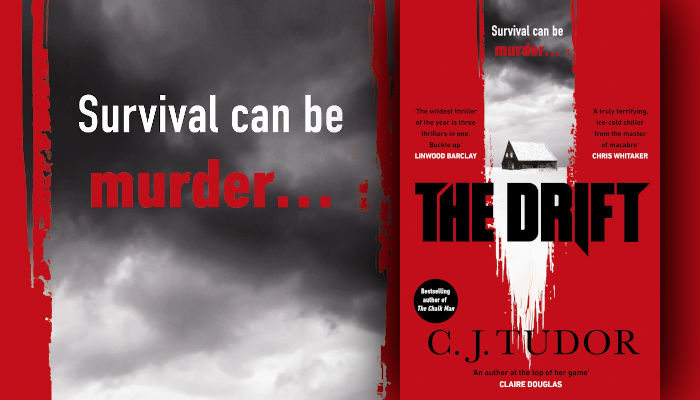The pandemic hit us all hard in different ways. Now that we’re seemingly out of the worst of it, and getting back to normalcy years later, we’re starting to see how the creatives amongst us took it all. It’s coming through their work, including movies, books and more, and many are also being honest in interviews and afterwords. It goes to show that, no matter your standing in life, the pandemic hit everyone hard.
Out of all of the books I’ve read since the onset of the Coronavirus pandemic, C.J. Tudor’s latest — which is titled The Drift — is the one that’s made me think about it the most. That’s for good reason, too, as the British author seems to have taken a lot of inspiration from COVID-19. After all, this is a novel about a world dealing with a different pandemic, but one all the same.
The Drift is told from three different perspectives, and begins with two similar but varied occurrences. The first one — a crashed coach from a secluded and very expensive boarding school — introduces us to Hannah, whose father is the leading scientist at said educational establishment. The second — a stalled cable car sitting precariously over a mountain — introduces us to Meg, a former police officer who thought she lost everything. Then, there’s Carter, who lives and works at something called the Retreat. It’s a secure facility at the top of the mountain, where people must come together to keep things running for some unknown reason. All three play an integral role in this story, as do some of the people they meet in their attempts to survive.
You see, Hannah and Meg are not alone in their precarious situations. While Hannah is surrounded by several deceased students who died in the crash, she’s not the only survivor and is, in fact, one of several. All thought they were leaving for a better place, in an attempt to get away from the infection. Meg, meanwhile, is joined by several others in this stranded cable car. Only one of them is dead, though, and under strange and worrying circumstances, too.

The book moves from one vantage point and situation to another on a chapter-by-chapter basis, never spending consecutive chapters in one character’s shoes until near its conclusion. It isn’t clear what these three have in common, either, leaving the reader at a loss. An interested one, but a loss nonetheless. None of these characters are the deepest ever written, either, but they do the job and move the plot forward in interesting ways, until it all comes together quite well near the end. In fact, the last part of The Drift was easily its best, without comparison. I was really impressed with how the author brought things together, despite previously believing that this might’ve been her worst book thus far. That’s not to say that I didn’t like it from start to finish, but it didn’t really hook me like some others, and I admittedly set it down for a couple or few weeks. However, when I picked it back up again, it was hard to put down, which led to me finishing the rest in one sitting.
All of the above is wrapped up within a pandemic, as mentioned above. One that either kills people, or turns them into creatures called Whistlers, because they make a whistling sound when they breathe. These sick and contagious individuals have lost most of their humanity, and reside in the wilderness, where they attempt to survive, sometimes alone and sometimes in packs. Many have also been taken to camps where they’re studied and utilized for the greater good. Needless to say, they’re an added danger.
I can’t say much more about the plot of C.J. Tudor’s most recent effort without risking spoilers. This is something that’s best to go into almost blind, if not completely blind. It’s perhaps her best written book, but its first part isn’t as riveting or interesting as some of her other works. That all changes near the end, though, which is quite good and tough to put down. It’s worth reading towards for sure, as this whole book is worth reading in general.
If you’re a fan of C.J. Tudor, you’ll notice that The Drift is quite different from any other book she’s written. It’s got some of the weirdness of The Other People, but it’s not heavily reminiscent of Stephen King like The Chalk Man or The Hiding Place, and very little of The Burning Girls. This is something that is its own story, and continues the trend I’ve noticed where this author has been able to separate herself from imitating Stephen King to becoming her own fictional writer. It’s another step in the right direction, and is a good book that gets better as it goes along, but it’s not her best work. The short story collection, A Sliver of Darkness, remains king, and I personally preferred some of the others as novels.
This review is based on a copy of the book we were provided with digitally. However, it wouldn’t work on our Kindle, so we borrowed a first edition from the library and read that.

